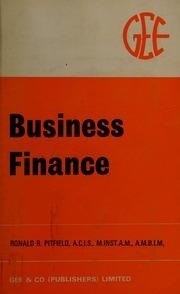Question
As she headed toward her bosss office, E. Hamilton, chief operating officer for the A Corporationa computer services firm that specialized in airborne supportwished she
As she headed toward her bosss office, E. Hamilton, chief operating officer for the A Corporationa computer services firm that specialized in airborne supportwished she could remember more of her training in financial theory that she had been exposed to in college. E. Hamilton had just completed summarizing the financial aspects of four capital investment projects that were open to A Corporation during the coming year, and she was faced with the task of recommending which should be selected. What concerned her was the knowledge that her boss, Kay Marsh, a street smart chief executive, with no background in financial theory, would immediately favor the project that promised the highest gain in reported net income. E. Hamilton knew that selecting projects purely on that basis would be incorrect; but she wasnt sure of her ability to convince Kay, who tended to assume financiers thought up fancy methods just to show how smart they were.
As she prepared to enter Kays office, E. Hamilton pulled her summary sheets from her briefcase and quickly reviewed the details of the four projects, all of which she considered to be equally risky.
A proposal to add a jet to the companys fleet. The plane was only six years old and was considered a good buy at $300,000. In return, the plane would bring over $600,000 in additional revenue during the next five years with only about $56,000 in operating costs. (See Figure 1 for details.)
A proposal to diversify into copy machines. The franchise was to cost $700,000, which would be amortized over a 40-year period. The new business was expected to generate over $1.4 million in sales over the next five years, and over $800,000 in after-tax earnings. (See Figure 2 for details.)
A proposal to buy a helicopter. The machine was expensive and, counting additional training and licensing requirements, would cost $40,000 a year to operate. However, the versatility that the helicopter was expected to provide would generate over $1.5 million in additional revenue, and it would give the company access to a wider market as well. (See Figure 3 for details.)
A proposal to begin operating a fleet of trucks. Ten could be bought for only $51,000 each, and the additional business would bring in almost $700,000 in new sales in the first two years alone. (See Figure 4 for details).
In her mind, E. Hamilton quickly went over the evaluation methods she had used in the past: payback, internal rate of return, and net present value. E. Hamilton knew that Kay would add a fourth, size of reported earnings, but she hoped she could talk Kay out of using it this time. E. Hamilton herself favoured the net present value method, but she had always had a tough time getting Kayto understand it.
One additional constraint that E. Hamilton had to deal with was Kays insistence that no outside financing be used this year. Kay was worried that the company was growing too fast and had piled up enough debt for the time being. She was also against a stock issue for fear of diluting earnings and her control over the firm. As a result of Kays prohibition of outside financing, the size of the capital budget this year was limited to $800,000, which meant that only one of the four projects under consideration could be chosen. E. Hamilton wasnt too happy about that, either, but she had decided to accept it for now, and concentrate on selecting the best of the four.
As she closed her briefcase and walked toward Kays door, E. Hamilton reminded herself to have patience; Kay might not trust financial analysis, but she would listen to sensible arguments. E. Hamilton only hoped her financial analysis sounded sensible!


Required
1. Refer to Figures 1 through 3. Add up the total increase in after-tax income for each project. Given what you know about Kay Marsh, to which project do you think she will be attracted?
2. Compute the payback period, net present value (NPV), Profitability Index of all four alternatives based on cash flow. Use 10 % the required rate of return (discount rate) in your calculations. For the payback method, merely indicate the year in which the cash flow equals or exceeds the initial investment. You do not have to compute midyear points.
3. a. According to the payback method, which project should be selected? 4. b. What is the main disadvantage of this method?
5. a. According to the NPV method, which project should be chosen? How does this differ from the answer under the PI? b. If Kay had not put a limit on the size of the capital budget, under the NPV method which projects would be accepted? Do the NPV and PI both reject the same project(s)? Why?
c. Given all the facts of the case, are you more likely to select Project A or C?
Figure 1 Financial analysis of Project A: Add a twin-jet to the company's fleet Figure 3 Financial analysis of Project C: Add a helicopter to the company's fleet Figure 4 Financial analysis of Project D: Add fleet of trucks Figure 1 Financial analysis of Project A: Add a twin-jet to the company's fleet Figure 3 Financial analysis of Project C: Add a helicopter to the company's fleet Figure 4 Financial analysis of Project D: Add fleet of trucksStep by Step Solution
There are 3 Steps involved in it
Step: 1

Get Instant Access to Expert-Tailored Solutions
See step-by-step solutions with expert insights and AI powered tools for academic success
Step: 2

Step: 3

Ace Your Homework with AI
Get the answers you need in no time with our AI-driven, step-by-step assistance
Get Started


